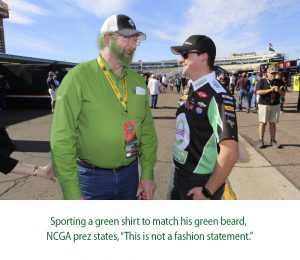 I would love to be like the French. From the culture, to the food, to the fashion, they hold a place in many American hearts that fell in love with movies set in France of, well, Americans falling in love.
I would love to be like the French. From the culture, to the food, to the fashion, they hold a place in many American hearts that fell in love with movies set in France of, well, Americans falling in love.
That said- there are few parallels drawn between French diet outcomes that go well. Try the “French Women Don’t Get Fat” diet? I did too. I left it almost five pounds heavier myself…
I am getting to a point about science, so bear with me.
Cultural differences make certain ideas less applicable to your own life than they might seem. You can dream of walking around in cute striped shirts and stylish ballet flats, but it won’t make the local Walmart seem like a French bakery.
Similarly, applying a situation that has many variables that have not been accounted for scientifically can lead one to daydream in ways which might seem seductive but, in reality, may land as flat as my attempts at wearing a beret.
Let’s start with the fact that the study doesn’t consider smoking a behavior which should be considered independently. Always consider smoking independently. Every French movie, and many American classics, make it look incredibly cool if we are being honest. The reality isn’t cool- we all know that. So, conflating smoking with poverty seems more like adopting modern, incredibly biased mindsets that assume certain behavioral patterns amongst the lower class. Shortly, don’t French up your cultural stereotypes dressed up as science.
Next, let’s go to another finding that blows smoke in the face of science. Non-smokers who exercise and eat organic tend to have less cancer? And they tend to be wealthy? The plot twists skew the underlying message. Wealth affords people more choices much as living in Paris would allow me additional opportunities for exercise as jogging down the Champs-Elysees inspires greater exercise than sweating on a 20-year-old treadmill in my moldy basement.
Without controlling for the impact free time has on the well-intentioned exercise plans have on many, and with no consideration for the difference in outcome that local, pleasant exercise venues might have, it makes no sense to link the prevalence of organics in one’s diet to their health and tangentially link income. We would all love to be wealthy and a physical specimen fit for the Louvre. To think that circumstances such as lacking the time or funds to make that happen and, for whatever reason, then attributing good health outcomes to eating foods which are more expensive and, scientifically, are the equivalent of what paupers dine upon, is the same as mistaking the waft of a fine French perfume with that coming from a particularly flatulent hog.
Similar studies in the dowdier United Kingdom have found that cancer and imbibing solely upon organics do not decrease the risk of cancer. British royalty who have married into their positions aside, viewing this information like former colonists seems more reasonable.
Differences in wealth, status and social norms do impact what one does. Smoke? Drink? Live it up on KFC Double Downs? These choices will impact your health.
Attend workout classes with a support group of similarly motivated individuals, imbibe in moderation, forego smoking and snack upon creations based upon vitamin rich superfoods? These choices will impact your health, but you have to be able to not only afford them but also have a situation which elevates one to the emotional plane that dulls the draw of life’s great escapes.
Notably, none of this has to do with organics.
I would dare to guess that the French woman less prone to cancer and more prone to a healthy bank account balance looks fantastic. With a Yves Saint Laurent bag full of gym clothes tossed jauntily over one’s shoulder, it is hard not to sashay beguiling back to the flat for an enviable evening.
The woman who worked all day for far less than her male counterpart? With no financial angel in sight? Going home to a workout of cleaning, chores and the mental Olympics of keeping the family afloat? Logically, things might look a little less intriguing.
So, did the organic vegetables the charmed life afforded the first woman magically reduce her risk of cancer? Or did the multitude of stressors and detrimental factors facing the second, from stress-induced vices to the inability to afford, let alone prepare, fresh foods increase her risk of cancer so little that one could lithely attribute good health to unproven fairy dust produce marketed in a glittery organic cloud?
Organic foods may seem aspirational. Like many fairytales, the sell you magic beans. Cancer is scary for real reasons. Spinning charming tales of French ingénues skipping through cancer-free streets due to an organic diet, devoid of fact, is devoid of charm.
Reality requires one to wake up to harsh truths. The many outcomes of poverty and wealth impact everyone’s life in ways which seems to belong more in the vision of a German nihilist than a French romantic. Considering the implications of the genetic lottery to which we are all subject, looking at the vast situational differentials in Las Vegas might be more appropriate…
Everyone wants to buy their way out of the parts of life that resemble a Grimm’s fairytale more than a Paris dream vacation. Scientists, a wholly unromantic lot, have proven organics do not offer greater nutrition or greater safety than the foods that most American farmers, covered in dirt and sweat as they may be, toil to provide.
In cancer, science and food, fads like organics that seem to have a certain je ne sais quoi don’t really mean much more than the markup on buying an Eiffel Tower trophy at the tourist stand on the Champs de Mars or Amazon.com. The final outcome of each transaction is the same; it just costs much more and feels much fancier in the interim.
Much like diets based upon glamourous sounding gamines in France, this study whisks one away to a world without care. Also, much like the diet, this study leaves the truly well-intentioned people who fall for it feeling disappointed by the empty promises and, maybe, even somewhat heavier for the toll it takes.




 National Corn Growers Association
National Corn Growers Association
